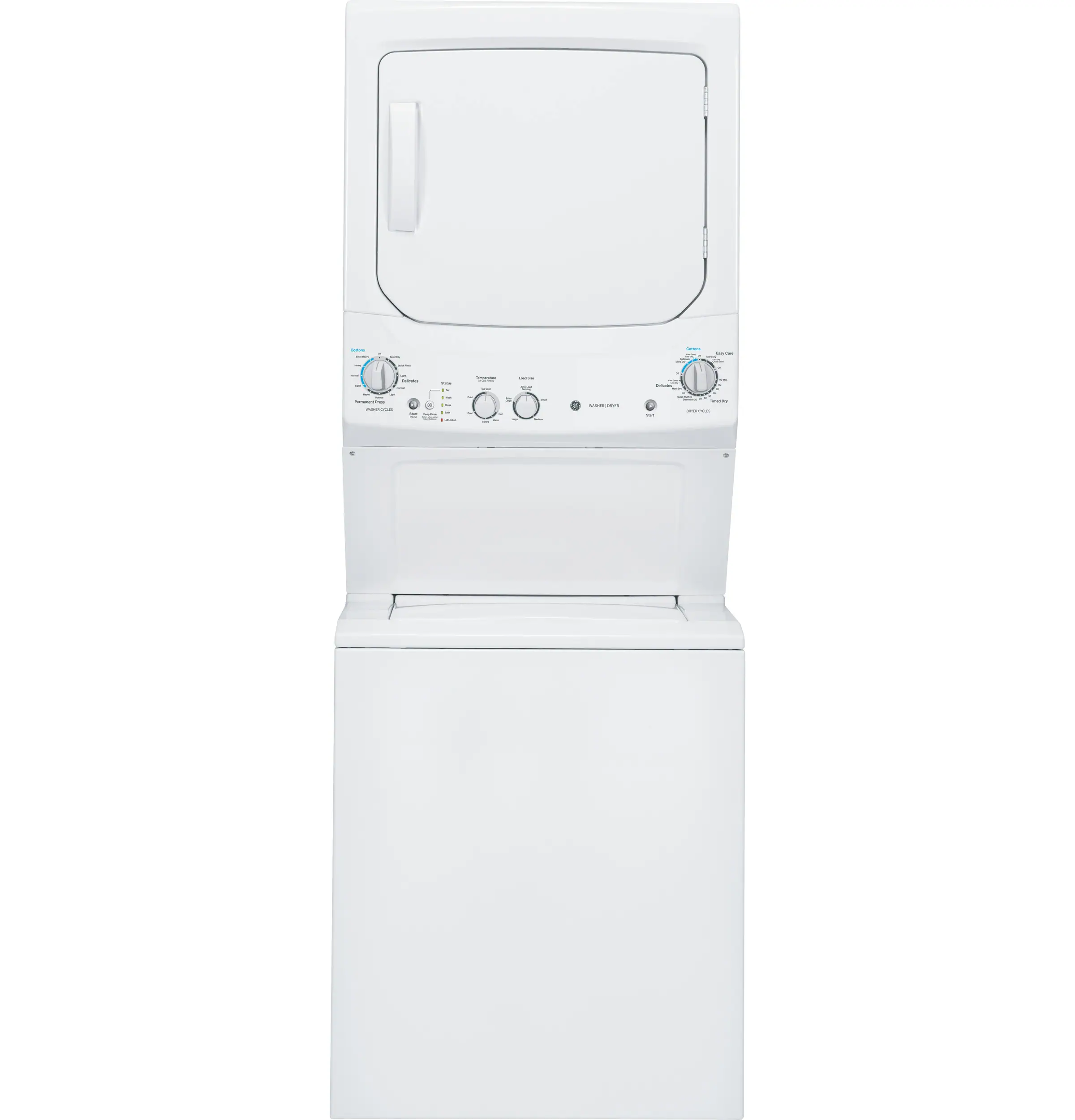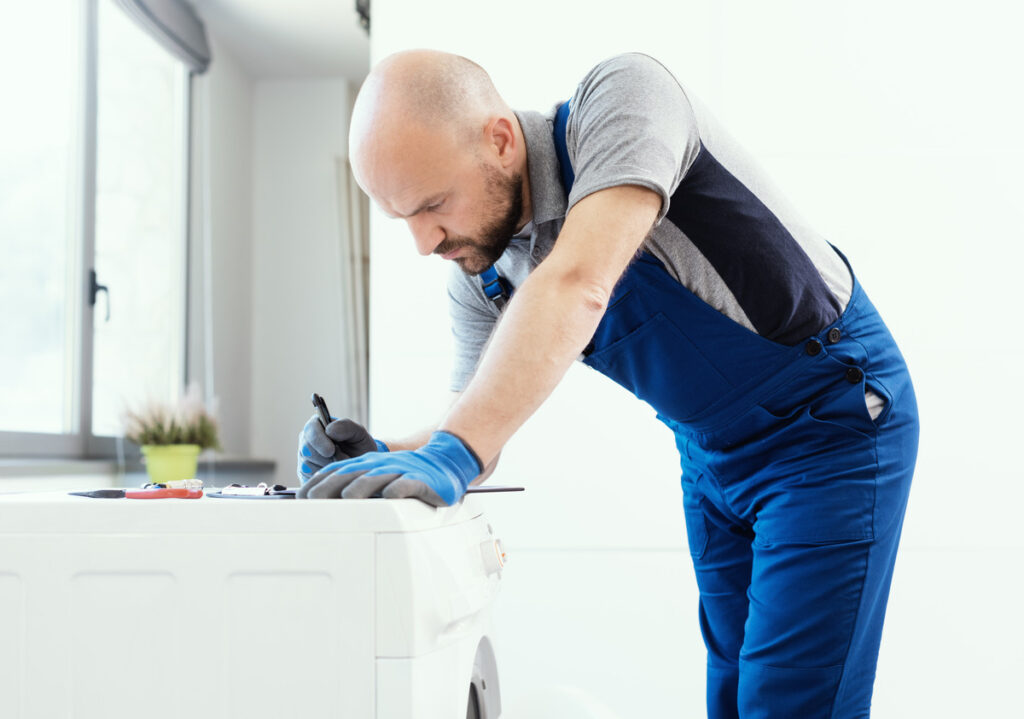Working time:
Monday to Saturday: 8:00 A.M. – 7:00 P.M.
Sunday: 9:00 A.M. - 4:00 P.M.
Working time:
Monday to Saturday: 8:00 A.M. – 7:00 P.M.
Sunday: 9:00 A.M. - 4:00 P.M.
Client Services:
Client Services:
GE Washer & Dryer Repair
Many individuals encounter problems with their Admiral dryer, requiring Admiral dryer repair or maintenance for their Admiral machine at some point. Often, there are numerous questions that can be addressed and troubleshooting steps that can be taken at home before the need arises to enlist the services of a professional repair specialist.

Common Problem
GE combo washer and dryer units may face issues like poor drying performance, failure to drain water, or inconsistent washing cycles. These problems often stem from clogged vents, malfunctioning heating elements, or obstructions in the water drainage system.
If clothes remain damp after a drying cycle, the heating element or moisture sensor might need attention. Water leaks during operation are often due to damaged door seals or improper hose connections. If washing cycles are inconsistent or fail to complete, the issue could lie with the control board or motor.
GE Clothes Washer & Dryers Troubleshooting
If your GE unit leaves clothes damp, start by cleaning the lint filter to ensure proper airflow. Inspect the dryer vent and exhaust system for blockages that can restrict airflow and compromise drying efficiency. Check the heating element for visible signs of wear or damage, as a faulty element can prevent the dryer from generating sufficient heat. Additionally, test the moisture sensor to ensure it’s functioning correctly, as an inaccurate sensor can disrupt drying cycles.
When water fails to drain, inspect the drain pump and filter for clogs caused by lint, fabric debris, or foreign objects. Examine the drain hose for kinks or blockages that may obstruct water flow. If the pump motor is malfunctioning, it may need replacement. Ensure that the unit is properly leveled, as an uneven position can interfere with drainage.
Water leaks often result from worn or damaged door seals. Carefully inspect the seal for cracks, tears, or misalignments. Check the inlet and drain hoses for signs of wear or improper connections, tightening them as needed. If the water inlet valve is faulty, it may require replacement. For leaks at the base, inspect the tub and related components for damage.
Strange sounds during operation can indicate worn or misaligned parts. Examine the drum belt and pulleys for wear, replacing them if necessary. Inspect the bearings and drum rollers for excessive wear, as these components can cause squeaking or banging noises. Additionally, check for foreign objects caught in the drum or pump area that might be causing the noise.
If the appliance fails to start, first verify that it’s securely plugged in and the outlet is functional. Test the door latch to ensure it engages properly, as the unit won’t start if the door isn’t securely closed. Examine the control board for any error codes that might provide clues about the issue. Test the start switch, thermal fuse, and other electrical components for faults, replacing them if necessary.
Top 6 Problems and Solutions for your GE washer & dryer
Clothes Not Drying Fully
1. Clean the lint filter to improve airflow
2. Check the vent and exhaust system for blockages
3. Inspect the heating element for damage
4. Test the moisture sensor for faults
5. Ensure the drum is spinning correctly
Washer Not Draining Water
1. Remove clogs from the drain pump and filter
2. Check the drain hose for kinks or obstructions
3. Level the appliance to prevent drainage issues
4. Test the pump motor for proper function
5. Replace any faulty components
Water Leaking During Operation
1. Inspect the door seal for damage
2. Tighten connections on the inlet and drain hoses
3. Test the water inlet valve for leaks
4. Ensure the appliance is properly leveled
5. Replace any damaged seals or hoses
Loud Noises During Operation
1. Check the drum belt and pulleys for wear
2. Inspect the bearings and drum rollers for damage
3. Remove foreign objects from the drum
4. Tighten loose components in the appliance
5. Replace worn or damaged parts
Unit Not Starting
1. Verify that the unit is plugged in and powered
2. Test the door latch for proper engagement
3. Inspect the control panel for error codes
4. Test the start switch and thermal fuse
5. Replace defective electrical components
Inconsistent Washing Cycles
1. Check the control board for errors
2. Test the motor for functionality
3. Inspect the drum for obstructions
4. Clean the water inlet screens
5. Replace any malfunctioning parts
Additional GE Washer & Dryer Troubleshooting Techniques
Maintaining your GE combo washer and dryer requires a combination of regular care and prompt attention to emerging issues. Start by routinely cleaning the lint filter after every drying cycle to ensure proper airflow and prevent lint buildup, which can compromise drying efficiency. Inspect the venting system at least once every three months, checking for blockages or damage that could restrict airflow. Use a vacuum or a vent cleaning brush for thorough maintenance.
For the washer, regularly check the drain pump and filter for clogs caused by lint, debris, or foreign objects. These clogs can lead to water not draining properly or leaks. Inspect and clean the inlet hoses and screens to ensure an uninterrupted water supply.
If you notice unusual noises during operation, inspect and replace worn components such as drum rollers, bearings, or belts. Tighten any loose screws or bolts that could contribute to vibrations or rattling. Additionally, ensure that the appliance is level to avoid excessive movement and operational inefficiencies.

